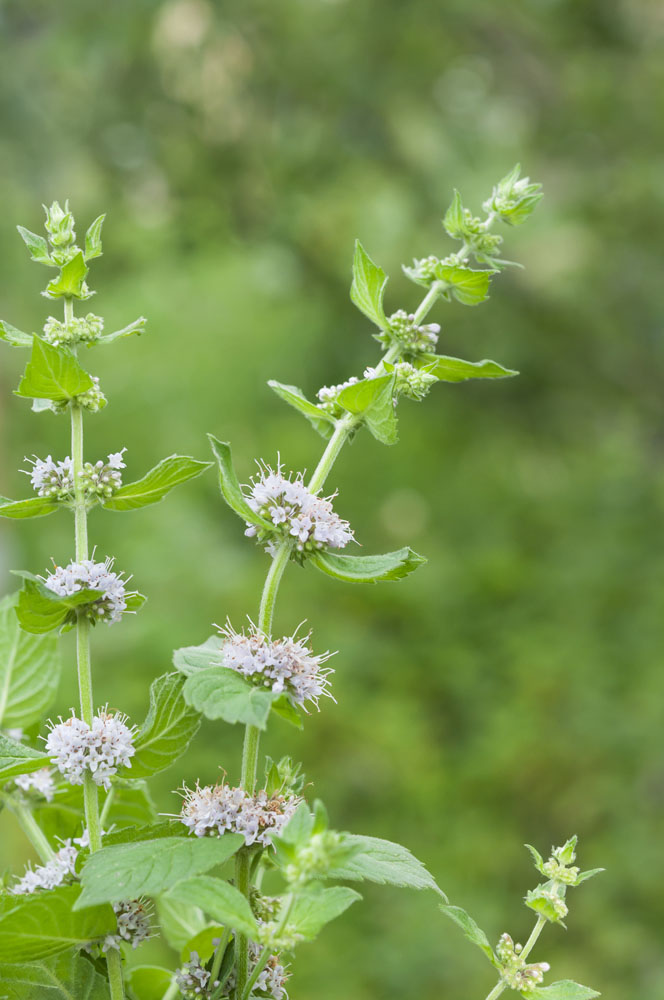Description
Mentha – Mint –
There are about 25 species of aromatic, evergreen or semi evergreen, rhizomatous perennials, rarely annuals in this genus. They are distributed in Europe, Asia, And Africa, often found in shallow water or wet or moist soil. Erect, branching stems bear lance shaped to rounded, light to dark green, purple, blue, or gray-green leaves. The tubular to bell shaped flowers are weakly 2 lipped, each with 4 spreading lobes and leafy bracts. They are borne in summer, in spikes of whorl like clusters, or occasionally in a single, terminal cluster. Mints are widely used as culinary, fragrant, medicinal and industrial herbs.
Grow in a herb or vegetable garden, the less invasive species are also suitable for a herbaceous border. M. aquatica is useful for stabling the muddy edged of a pool, M. pulegium can be used as a low groundcover, and M. requienii is useful for a moist, shady rock garden. All attract bees, most dry well for use in herbal and potpourri.
Grow in rich, moist soil in full sun. Restrict spread of invasive species by planting in deep containers and plunging into the soil (leaving an inch of the rim above soil level), or by growing in small, confined beds to restrict root run. M. aquatica can be grown in containers submerged in water to 6″ deep. Divide in spring or autumn.
Prone to powdery mildew, rust, leaf spot, anthracnose, and stem canker.
M. arvensis – Corn Mint – Field Mint – This erect hairy perennial reaches up to 24″ tall. It occurs throughout most of Europe on disturbed, often damp ground. The lance shaped leaves are shallowly toothed. The lilac flowers appear in dense axillary whorls from mid summer until fall. This species has the property of being able to prevent milk from curdling and was once grown solely for this purpose.
Zones 6-10





